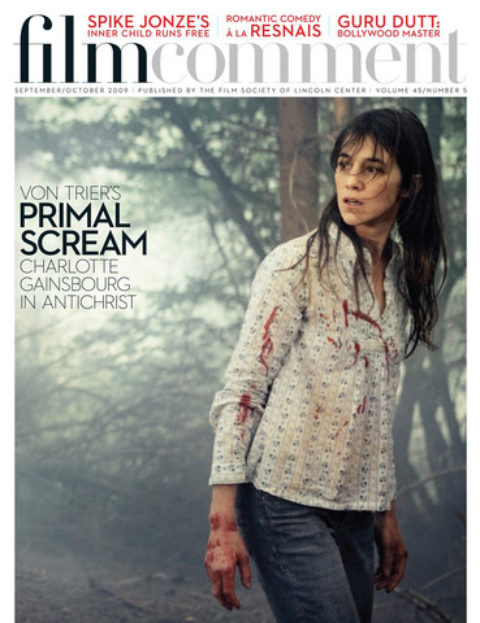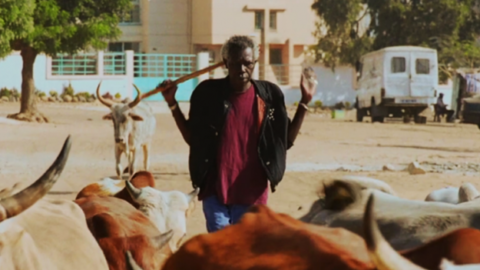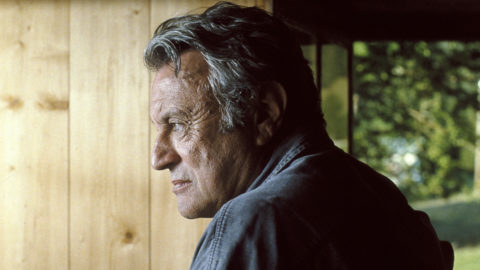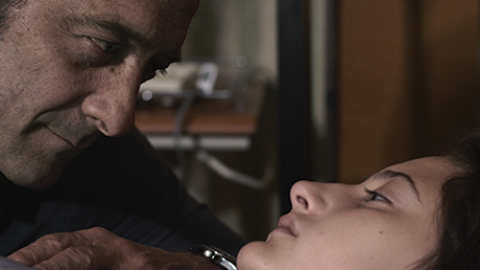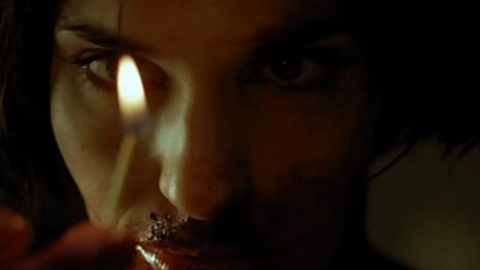
As many critics have noted, Claire Denis’s work has been drifting toward a “musical” abstraction for some time now. Kent Jones has compared her to Ornette Coleman, and Jonathan Rosenbaum to Charlie Parker, though I don’t find much in her films as deliberately disruptive and dissonant as the work of those two great jazz innovators. Her films seem more in tune (literally) with the smooth, seductive pop jazz sensibilities of the group Tindersticks, which has scored her Nénette and Boni (96), Trouble Every Day (01), and now 35 Shots of Rum.
But Denis has also made films that draw on dance: Beau Travail (99) in collaboration with the choreographer Bernardo Montet (and featuring a bravura dance performance by Leos Carax’s personal Gene Kelly, Denis Lavant), and the documentary Vers Mathilde, about the choreographer Mathilde Monnier (05, and so far unreleased in the U.S.). And Friday Night (02) can be looked at as an extended tango of seduction between two strangers (Valérie Lemercier and Vincent Lindon) played out in the course of a single Paris night.
35 Shots could also be seen as a film about bodies in motion, and more particularly, the impossibility of standing still. The film opens with a lovely, magic-hour montage set to a Tindersticks tune and offering undulating visions of railroad tracks, coming together and moving apart, as seen from the point of view of Lionel (Alex Descas, an axiom of Denis’s cinema since S’en fout la mort in 1990), an engineer for the RER, the rail system that links Paris to its suburbs. Interspersed with shots of the crisscrossing rails (a conventional image, perhaps, but one that Denis and her cinematographer, Agnès Godard, shoot with unusual grace) are close-ups of the middle-aged Lionel; a co-worker, René (Julieth Mars Toussaint); and a beautiful young woman, Joséphine (played by Mati Diop, a niece of the late Senegalese director Djibril Diop Mambety).

Denis and her scenarist (Jean-Pol Fargeau, another regular in the Denis universe) delay spelling out the relationship between these characters as long as possible. The scene shifts to a cozy apartment beside the railroad tracks where Joséphine is beginning to prepare dinner; when Lionel arrives with a gift for her—a shiny new rice cooker—we’re uncertain whether she’s his wife, his lover, or his daughter. Eventually, an insert shot showing a photograph of a young girl with an older woman efficiently informs us that Lionel is a widower and Joséphine is his child, but the initial ambiguity continues to cast a spell over the rest of the film, binding Lionel and Joséphine together in a special, undefined intimacy (like the brother and sister in Nénette and Boni). But as they sit down to eat, Denis cuts away to two other characters, both neighbors in the same apartment building: Gabrielle (Nicole Dogue), an open-hearted taxi driver who seems to have romantic designs on Lionel, and Noé (Grégoire Colin, another member of the Denis stock company), a loner whose interest in Joséphine is awakened over the course of the movie.
Denis has eliminated most of the expository material that would tie together the story in a conventional film, but we hardly miss it: the basic plotline—a dutiful daughter must learn to break away from her loving father, and find a life of her own—is familiar from countless Ozu films, and we hardly need to see it spelled out again. Instead, Denis moves her four characters into a choreographic abstraction of coming together and moving apart (most beautifully in a long scene set in a café, where the characters take refuge from a rainstorm when Gabrielle’s taxi breaks down on the way to a concert). As in a dance, gesture and movement subsume dialogue; we know what the characters are thinking and feeling through the ways they approach (and avoid) each other.
This technique allows Denis to soften and blur the turning points of the narrative (a suicide, a trip to Germany, a wedding); things happen, but without dramatic punctuation. Moving with a sense of continuous flow rather than bumping through a series of climaxes, 35 Shots becomes a sort of ballet of emotions, executed with weightless grace and poise.



